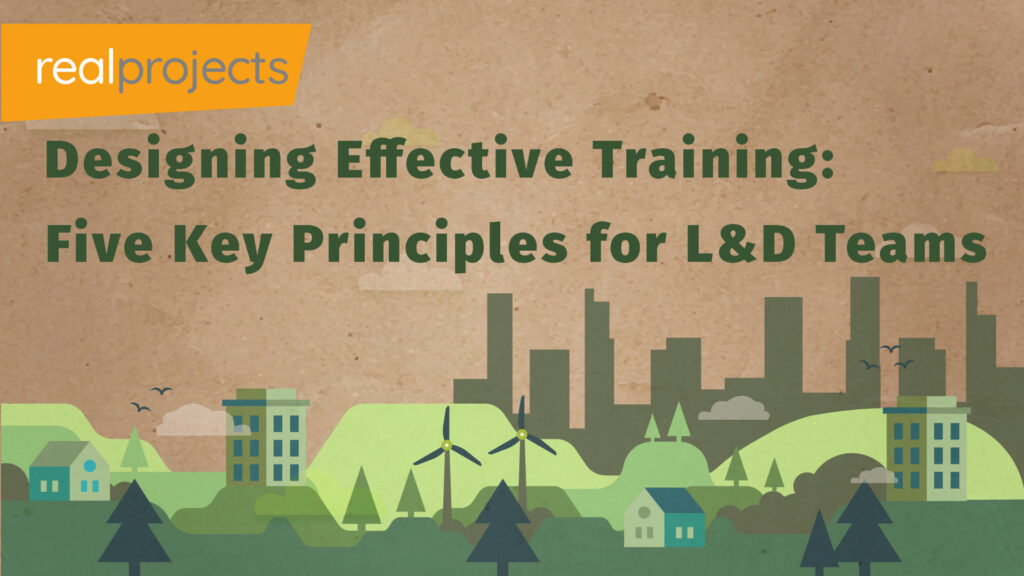Organisations often confuse a course with a curriculum, and it holds back learning at scale. A curriculum isn’t just more content. It’s a structured journey that builds real capability.
A good way of thinking about developing a training curriculum is this:
A Course = One Skill
A Curriculum = Strategic Learning Path
Done Right, It Drives Engagement, Retention, Productivity, and Revenue
How It Impacts You
Without a clear curriculum, you get:
- Random content with no clear path
- Repetition and skill gaps
- Confused learners and poor results
Things to consider in your curriculum design
- Start with a competency assessment (this isn’t a test!)
- Design for consistency, progression, and reuse
- Train subject matter experts to teach well
- Make stakeholder input part of your process
What’s Happening
Most teams don’t have a real strategy. They just add courses and call it a curriculum.
What’s the Difference Between a Course and a Curriculum?
It’s a question that often surfaces when organisations begin to develop structured learning. Sometimes it starts with a brief to scale the training programme. Other times, it’s when someone realises existing content isn’t delivering results.
A single course typically covers one skill. A curriculum builds broader competence. It’s layered, sequenced, and aligned with outcomes. Moving from one to the other isn’t just a content challenge, it’s a curriculum design challenge.
It takes time and input from across the organisation. But when it’s done right, the results are clear:
- Enhanced Employee Engagement: Organisations that prioritise a learning culture through robust training initiatives empower their workforce to navigate the ever-changing landscape with agility and resilience. (eLearning Industry)
- Improved Knowledge Retention: Including frequent evaluations in training can boost knowledge retention by 25%. (eLearning Industry)
- Increased Productivity: Programmes that promote mental health, stress management, and emotional resilience help employees face challenges inside and outside of work. (eLearning Industry)
- Increased Revenue: Companies with curriculum-based education initiatives are more likely to report increased revenue than those with ad-hoc efforts. (Intellum)
- Enhanced Productivity: When employees receive the training they need, companies are 17% more productive. (Devlin Peck)
- Employee Retention: 76% of employees say they’re more likely to stay with a company that offers continuous training. (eLearning Industry)
Questions to Consider When You Start Building the Curriculum
Every curriculum design project raises important questions. Some come from stakeholders. Some you’ll need to ask yourself:
- Where are people starting from?
- What gaps are we trying to close?
- How will we know if they’ve succeeded?
Scott Hewitt shares “One insight that stayed with me came from a training conference. A delegate shared how critical it is to assess competency levels early. Without that baseline, everything else is guesswork.”
He explained how assessment tests weren’t about passing or failing. They helped personalise the learning journey, especially for those already close to competence.
You might want to consider a pre-assessment or pre-qualification to understand where people are on their learning journey.
Working on AnalyiSport Scott provides this insight “Why are people still treating assessments only as a pass/fail test? That’s not the idea. When we used them in AnalyiSport and on projects in education, it was about helping people know where to start and giving them useful feedback. It doesn’t always need to be a test.”
Closing the Knowledge Transfer Gap
Experts don’t always make great teachers. Translating deep subject matter expertise into accessible, plain language is a skill in itself. That’s why part of building a curriculum includes supporting SMEs to share their knowledge effectively.
Design Principles That Make Curriculum Design Work
Curriculum design always comes with constraints: legal compliance, certification standards, limited budgets, and organisational resistance. These are real challenges, but manageable with the right approach.
Here are five principles that consistently make the difference:
- Start with stakeholder input and work backward from business goals
- Build with consistency, no course should contradict another
- Include prerequisites and define a clear course sequence
- Plan for sustainability and long-term updates
- Include a final applied project that brings all the learning together
The final project isn’t just a final activity. It’s the point where learners demonstrate that they can apply their learning in a real-world context.
As someone put it perfectly during a workshop: “A curriculum is a plan, more than anything else.”
That plan should:
- Sequence courses in a logical, progressive order
- Align with external standards and internal performance goals
- Ensure consistency across all modules
- Lead to something meaningful. A certification, job role, or defined capability
Something to consider during your curriculum design
Start by asking: Is there a clear strategy behind this learning journey? Without one, even the best content can lose impact. A curriculum isn’t about volume, it’s about purpose. Sometimes, just a handful of well-structured elements can achieve more than dozens of disconnected courses.
From Tactics to Strategy: Building a Curriculum That Lasts
Here are practices that work when you are building a curriculum.
- Start with a competency assessment to map existing skills
- Define clear course objectives and link them to broader competencies
- Use performance-based assessments wherever possible
- Prototype early and seek feedback throughout
- Build support early, don’t underestimate the approval process
Design for Reuse
Effective curriculum design considers how content can be used across different levels, formats, and regions.
Content that is easy to adapt and update saves time and reduces cost in the long run, especially when reuse is planned from the outset.
When it came to stakeholder sign-off, simplicity proved most effective.
Successful teams asked clear questions: “What’s blocking progress? What skills are missing?” They avoided jargon, relied on quick sketches rather than lengthy slide decks, and focused on clarity. This approach helped maintain momentum and supported scalable delivery.
Scott Hewitt shares, “Are we designing for reuse? We talk about sustainability, but how do L&D leaders support this? Do you throw away or delete project files? You should be looking to see how you can re-use as much project content as possible.”
Several years ago we developed football content and then a request to expand a course often evolved into something more strategic. It required stepping back, aligning with business goals, and designing a learning experience with measurable impact.
That’s the essence of curriculum design:
A plan for change—built with purpose and scale in mind.
Questions
Q: What is the difference between a course outline and a curriculum?
A course outline covers what’s in a single course, topics, objectives, and structure.
A curriculum links multiple courses together in a planned sequence to build broader skills over time.
Q: What do you mean by curriculum?
A curriculum is a structured learning plan.
It includes multiple courses, sequenced properly, with clear goals and outcomes—usually aligned to a job role, certification, or real-world skill.
Q: What is the difference between curriculum design and course design?
Course design is about one course. Its content, format, and delivery.
Curriculum design looks at the bigger picture: how all courses work together to build skills step-by-step.
Q: What is an example of a curriculum?
A leadership curriculum might include courses on communication, decision-making, team management, and conflict resolution, delivered in a specific order to support promotion into a senior role.



